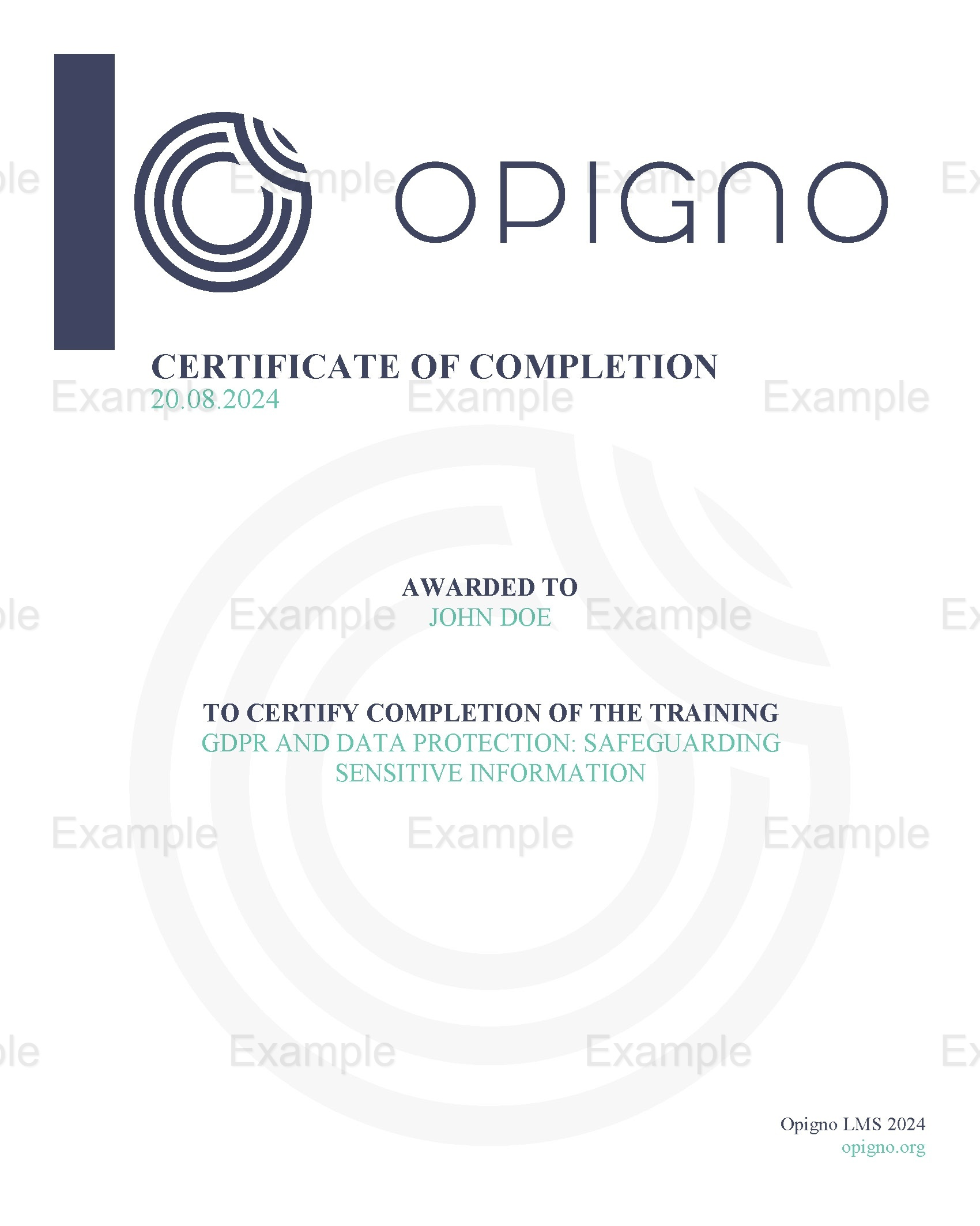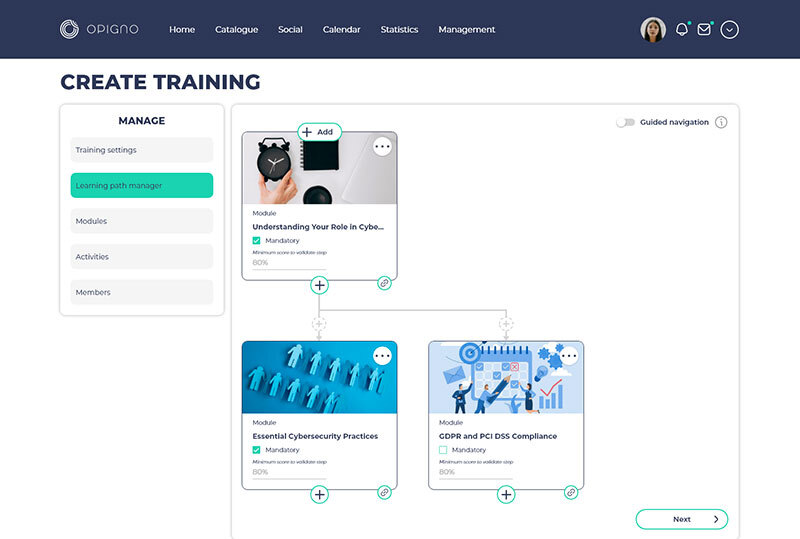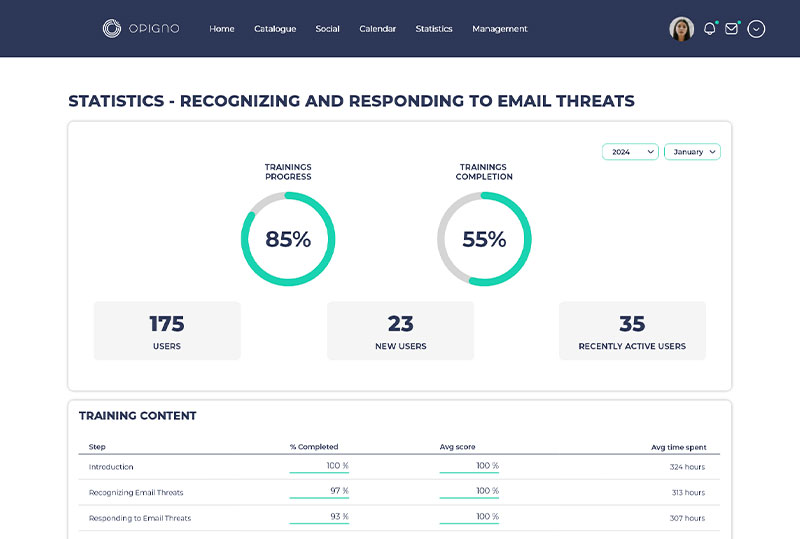Much like safety training is quintessential for preventing workplace accidents, security training is fundamental for withstanding deliberate security threats that have been on the rise since forever.
Verizon's 2024 Data Breach Investigations Report states that "the human element was a component of 68% of breaches", excluding malicious privilege misuse.
As over two-thirds of cyber incidents can be traced back to human factors, proactive security training can be the game-changing weapon in safeguarding your company's digital perimeters against outsider attacks.
However, just as with safety training, a one-time event or a mere checkbox on a compliance list won't cut it. Employees need not only to understand security policies — they need to internalize them. This can only be achieved through continuous exposure to relevant, practice- and scenario-based training that mirrors the challenges they will face on the job, e.g., simulated phishing attacks or security breaches.
Furthermore, the rapid pace at which new, more sophisticated and targeted threats emerge means that security training must be up-to-date and dynamic.
All these requirements make traditional, in-person classroom training practically useless. They also make a strong case for using an LMS for security awareness training. So, let's go over the unique use cases and capabilities LMS has to offer.
Compliance tracking and certification
Security training must often meet multiple overlapping compliance requirements, depending on the industry, region, and roles within the organization. For instance, companies may need to comply with the GDPR for data protection, HIPAA for health information security, or PCI DSS for handling credit card data.
Additionally, industry standards like the NIST Cybersecurity Framework or ISO/IEC 27001 and internal data protection and incident response policies must also be adhered to. Non-compliance risks legal and financial penalties and exposes the organization to significant security vulnerabilities.
Traditional methods of tracking these requirements, such as manual logs or spreadsheets, are both a logistical nightmare and risky. A minor oversight, e.g., failing to document that an employee has completed a required course, could lead to non-compliance and potential fines.

An LMS removes the need for constant administrative oversight. It centralizes all compliance requirements, assigns and reassigns necessary courses, issues certifications upon course completion, and generates comprehensive compliance reports with a clear overview of which employees have completed required training, when, and what certifications they hold.
Continuous learning and microlearning modules
Classroom sessions are typically long, intensive, and infrequent, making them a poor fit for the ongoing nature of security threats, clashing work schedules, and the amount of information to absorb.
In contrast, an LMS enables employees to learn continuously and on their own accord through microlearning modules — bite-sized, focused training sessions that can be easily integrated into an employee's daily routine, ensuring that security awareness remains top of mind without overwhelming the learner. Instead of overwhelming employees with hours of information at once, microlearning breaks down complex security topics into manageable chunks.
These short, targeted lessons can be completed during brief downtimes, such as between meetings or on breaks, minimizing disruption to work schedules. This ongoing exposure helps to reinforce key concepts, making them more likely to be remembered and applied in real-world situations.
Version control and content updates
One of the key challenges with classroom sessions or printed materials is the time-consuming and costly process of keeping content up to date. While this aspect is problematic in any training context, it's even more concerning in security training, where new threats and vulnerabilities constantly emerge. The delay between the emergence of new threats and the dissemination of updated training creates a vulnerability in itself, exposing the organization to unnecessary risks.
With an LMS, on the other hand, updating training materials is as simple as uploading new content or making edits directly within the platform. These updates are instantly available to all users, ensuring that every employee receives the most current information without delay, regardless of their location or role. Moreover, LMS can often track which versions of training materials each employee has completed and automatically assign the new training to those who have only completed outdated versions.
For example, if an organization identifies a new phishing technique, it can quickly add information about this threat to its security awareness training and automatically notify all employees to complete it as soon as possible.
Personalized learning paths and adaptive learning
Addressing security awareness requires a targeted approach, as different employees face different security challenges based on their roles, access levels, and risk exposure. An LMS allows organizations to tailor learning paths to different roles. For example, marketing staff would double down on phishing awareness training, given their constant interaction with external parties, while IT specialists would undergo advanced threat detection training.
Moreover, the LMS can assign training based on the risk level associated with an employee's position. By aligning training content with each employee's specific risks, the organization can ensure that all staff are adequately prepared for the challenges they are most likely to encounter.

Beyond assigning relevant training, an LMS can track and analyze employee progress, using this data to adapt learning paths based on individual performance so that no one is left behind and all employees reach the required level of competence.

The data gathered by an LMS can also reveal trends, informing broader security strategies. For example, if a department frequently fails phishing awareness quizzes, the organization might conduct additional in-person workshops or deploy more frequent simulations to reinforce the training. This targeted approach ensures that the organization's overall security posture continuously improves and that resources go where they are most needed.
Gamification and engagement tools
While microlearning makes training more approachable by breaking down complex security topics into manageable chunks, gamification mechanics take learner engagement to the next level by introducing elements like points, badges, leaderboards, and challenges that motivate learners to stay consistent with their training.
For example, an LMS might award points for each completed module or provide badges for mastering specific security skills, encouraging employees to not only complete their required training but also to proactively improve — a massive benefit for staying updated with the latest threats and best practices.
Fostering competitiveness isn't the only method. One of the most significant advantages of gamification in an LMS is the ability to create immersive, scenario-based learning experiences that mimic real-world challenges. For instance, a tech company might integrate gamified cybersecurity training within their LMS, where employees compete in simulated threat detection scenarios where they practice identifying phishing attempts, responding to potential data breaches, or securing vulnerable systems risk-free.

On top of it all, such engagement LMS tools as social learning features, discussion forums, and peer challenges complement gamification by nurturing collaborative communities. As employees share their progress, exchange tips, or compete in team-based security challenges, they further deepen their understanding of security principles.
Simulations and virtual labs
While gamification elements like badges and leaderboards can enhance engagement, they are just the beginning. Advanced LMS platforms support full-on simulations that allow employees to go through realistic attack scenarios they might encounter on the job.
An ideal security training strategy would include regular live security drills or audits, especially with red team exercises and penetration testing. However, it is often not feasible due to cost and logistical demands. Simulations and virtual labs within an LMS offer the next best thing — a cost-effective and scalable alternative way of exposing employees to different breach scenarios and keeping them alert and prepared between live drills.
Employees can practice their responses to data breaches, phishing attempts, or ransomware attacks in real time, making critical decisions and observing the consequences of their actions in a safe environment. For example, you can run a desktop simulator where the employees must detect a network intrusion before it escalates, isolate the threat, and document the incident according to the company's protocols.
This hands-on practice is invaluable, as it allows employees to develop the muscle memory needed to respond quickly and effectively in actual security incidents.
Strengthen your security training with Opigno LMS
Continuous, practice-oriented security training empowers your workforce to become an active part of your organization's security posture. By turning theoretical knowledge into practical skills through regular, immersive training experiences, you significantly reduce the likelihood of a breach success (unless you train the hackers). Opigno LMS offers a robust and future-proof foundation for such training.
Opigno LMS provides the flexibility, scalability, and precision needed to deliver security training that is not only comprehensive and accommodating but also dynamic and engaging. It ensures that your employees receive the most relevant and up-to-date training tailored to their specific roles and risk levels, all while maintaining compliance with industry standards.
If you're ready to take your security training to the next level, contact our team to learn more about how Opigno's capabilities can help protect your business from digital threats. Let's build a more secure future for your organization where every team member, from the front lines to the C-suite, is prepared to act as a first line of defense.
Published on August 22, 2024